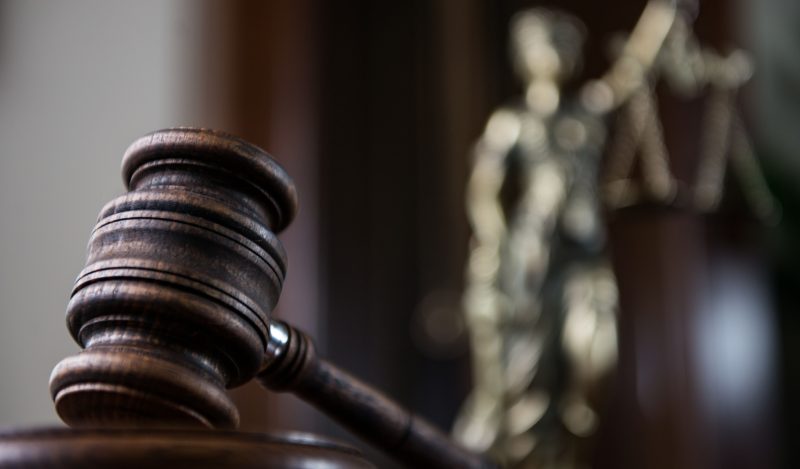from Brownstone:
 Though untruthful testimony pales in comparison to the crimes of the last five years, perjury may be the most effective charge to impose accountability on the wrongdoers behind the Covid Regime.
Though untruthful testimony pales in comparison to the crimes of the last five years, perjury may be the most effective charge to impose accountability on the wrongdoers behind the Covid Regime.
In the wake of World War II, American law enforcement discovered that top government officials had committed espionage on behalf of the Soviet Union. The Department of Justice was often unable to charge them as classified documents and bureaucratic secrecy risked prosecutorial dead ends.
TRUTH LIVES on at https://sgtreport.tv/
But a 35-year-old Congressman from California devised a plan to catch the actors in the coverups of their crimes. Rep. Richard Nixon grilled State Department Official Alger Hiss on his associations with professed Soviet spies, including Whittaker Chambers. Hiss lied under oath by claiming he never met Chambers, and a jury subsequently convicted him of two counts of perjury in 1950.
Perjury, though a petty charge compared to treason, allowed prosecutors to present a clear case for a crime that requires three basic elements: (1) the declarant took an oath to testify truthfully; (2) the declarant knowingly made a false statement; and (3) the declarant’s false statement related to a material fact.
Now, Americans again face the distressing realization that leading academic, scientific, and governmental officials were guilty of deception, profiteering, and entangling foreign relationships in a global crisis. Classified documents and bureaucratic secrecy offer far greater protection than they did 75 years ago, but the case for perjury against Peter Daszak is now clear.
- Daszak testified under oath
Last week, the House Select Subcommittee on the Coronavirus Pandemic released a report recommending EcoHealth Alliance President Dr. Peter Daszak be “formally debarred and criminally investigated as a result of his actions prior to and during the COVID-19 pandemic.”
Daszak funneled hundreds of thousands of dollars in US taxpayer money to the Wuhan Institute of Virology to fund gain-of-function research and then spearheaded censorship efforts by secretly organizing a statement issued by the Lancet in February 2020 calling lab-leak hypotheses “conspiracy theories” that “create fear, rumours, and prejudice that jeopardise our global collaboration in the right against this virus.”
In November, Daszak testified behind closed doors for nine and a half hours. A House Report subsequently noted that his organization “continued to obstruct” ongoing investigations. On May 1, 2024, he appeared before Congress.
“Daszak’s testimony was a parade of perjury,” Dr. Richard Ebright, a molecular biologist at Rutgers University, told the New York Post. “A litany of lies. One knowing, willful, brazen and provable lie after another.”
Though Daszak tried to evade the Congressional Committee with obfuscation and non–answers, he made at least three categories of statements that subject him to perjury charges.
- Daszak knowingly made false statements
On Gain-of-Function Research
Daszak insists that his groups have not engaged in gain-of-function research, but the evidence suggests he has repeatedly lied under oath.
Rep. Nicole Malliotakis (R-NY) asked, “You did not fund any research that modified a virus to make it more infectious among humans?” Daszak responded immediately, “EcoHealth Alliance never has, and did not do gain of function research, by definition.”
That “definition,” well known to Daszak, is research that “improves the ability of a pathogen to cause disease,” as one 2014 US Government report explained.
Daszak’s denial is entirely inconsistent with his own words and his group’s well-documented history of government grants.
In July 2016, an NIH official informed Daszak that his requests for funding for research that would be “conducted at the Wuhan Institute of Virology” had been approved. “This is terrific!” Daszak responded to the NIH. “We are very happy to hear that our Gain of Function research funding pause has been lifted.”
Daszak’s excitement reflected EcoHealth’s history of gain-of-function research.
In 2014, NIH awarded EcoHealth a $3.7 million grant to study bat coronaviruses, which it conducted in collaboration with the Wuhan Institute of Virology. The researchers reported that their lab-altered coronaviruses reproduced far more quickly than the original virus in the lungs of genetically engineered mice.
In 2018, EcoHealth submitted a $14 million grant proposal to the Defense Advanced Research Projects Agency (DARPA) that suggested a partnership with the Wuhan Institute of Virology in which they would construct bat coronaviruses and insert “human-specific cleavage sites” as a means to “evaluate growth potential” of the pathogens. Though the request was denied, it was consistent with EcoHealth’s line of work.



